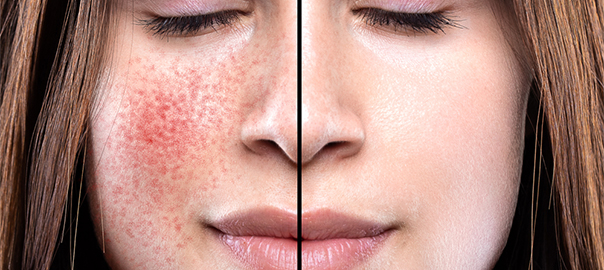One of the primary causes of mastitis is bacterial infection. The most common bacteria that can cause mastitis in dairy cattle include Staphylococcus aureus, Streptococcus agalactiae, Streptococcus uberis, Streptococcus dysgalactiae, Escherichia coli, Klebsiella pneumoniae, and Pseudomonas aeruginosa. These bacteria typically enter the udder through the teat canal when it is open between milkings or due to injury to the teat. Unhygienic milking practices that allow bacterial contamination of equipment can also lead to infection. Environmental pathogens residing on the cow, other cattle, or in poor housing conditions may also initiate an infection.
Risk Factors for Bovine Mastitis
Certain factors can increase the risk of a dairy cow developing Bovine mastitis. Poor udder hygiene, insufficient pre- and post-milking teat preparation, and equipment and personnel that are not properly cleaned and sanitized all allow more opportunity for bacteria to enter the udder. Overcrowded, unclean housing conditions with inadequate cow comfort and stall design promote environmental mastitis pathogens. Injuries to the teat such as cracks or lesions compromise the barrier against infection. Cows in their dry period or periparturient period are also more susceptible due to hormone changes and altered immunity around calving. The cow’s genetic susceptibility also impacts her likelihood of mastitis. Herd management practices play an important role in mastitis risk.
Clinical Signs of Mastitis
Mastitis can present clinically as either subclinical or clinical mastitis. Subclinical mastitis does not outwardly show signs of disease but can be detected through alterations in milk such as clots or flakes, increased somatic cell count, or bacterial culture. Clinical mastitis is overtly noticeable and may involve swelling, pain, and hardness of the udder accompanied by changes in the milk such as wateriness, blood, or pus. Severe cases can cause systemic illnesses including loss of appetite, decreased milk production, and high fever. Clinical mastitis is the easiest form to observe but represents only about one-third of all mastitis cases on dairy farms. The remaining two-thirds consist of subclinical infections that are more difficult to detect.
Diagnosis and Treatment of Bovine Mastitis
Bovine mastitis diagnosis involves identifying clinical signs, examining milk abnormalities, and confirming infection status through bacteriological culturing. California Mastitis Test (CMT) or other on-farm screening tests using milk samples detect elevated somatic cell counts indicative of intramammary infection. Culture and antibiotic sensitivity testing aid targeted therapeutic choices. Treatment involves both intramammary and parenteral antibiotics according to the isolated pathogen and severity of disease. Therapy must continue for the prescribed withdrawal time to ensure elimination of bacteria and prevent toxic antibiotic residues in milk. Cure rates depend on causative organism but average approximately 75%. Some chronic or “stalled” infections may require extended treatment duration or even culling. Preventive strategies including consistent milking hygiene and treatment ofclinical cases are most effective mastitis control approaches.
Economic Impacts of Bovine Mastitis
Mastitis is one of the leading production diseases affecting the global dairy industry with tremendous financial burden. The economic losses associated with mastitis can be categorized as direct treatment costs for therapy of clinical cases as well as indirect costs. Indirect costs are often substantially larger and may involve decreased milk yield in infected cows, premature culling, milk discarded during antibiotic therapy, and increased labor and management needs for mastitis control programs. A single case of clinical mastitis can reduce milk production by over 90 lbs over the whole lactation. Herd-level losses from suboptimal udder health have been estimated at $180-280 per cow annually. Globally, mastitis costs the dairy sector billions of dollars per year in reduced revenues caused by lower milk production and quality, demonstrating the economic importance of effective prevention and control.
Mastitis Control and Prevention Strategies
The cornerstone of any mastitis control program is implementation of management practices to reduce environmental pathogen exposure and support udder health. Premilking udder preparation using teat dips containing disinfectants limits bacterial access. Post-milking teat sealants form a physical barrier after milking to prevent new infections. Parlor and equipment design with easy cleaning influences milking hygiene. Dry cow therapy eliminates existing infections ahead of calving to reduce new case rate. Monitoring somatic cell counts through milk testing identifies problem quarters for targeted therapy and culling decisions. Biosecurity protocols minimize disease transmission among animals and from outside sources. Improved cow comfort and proper bedding management impact environmental mastitis. Genetic selection for udder conformation traits builds inherent cow resistance. With diligent implementation of best practices, the incidence rate and financial costs of mastitis can be substantially decreased on dairy operations.
Bovine mastitis is a complex infectious disease caused by a variety of bacterial pathogens that negatively impact dairy farm profitability worldwide. Effective prevention relies on consistent implementation of management strategies to maintain high standards of udder health and hygiene. Prompt diagnosis and targeted treatment are also crucial for therapeutic success and milk quality. With a thorough understanding of mastitis risks, regular monitoring, and commitment to prevention programs, dairy farmers can minimize the impacts of this costly production disease.
*Note:
1. Source: Coherent Market Insights, Public sources, Desk research
2. We have leveraged AI tools to mine information and compile it




